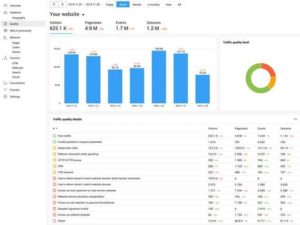5 eCommerce Vanity Metrics to Ignore
If you’re focused on getting insight from eCommerce eBooks and experts, you’ll often find they detail the metrics and data you should be most focusing on, whether it’s related to marketing, sales, or retention of customers.
While it’s important to know what data you should be collecting and analyzing, you also need to know what not to get caught up in.
Vanity metrics in eCommerce are things you shouldn’t be wasting your time or resources on.
Vanity metrics might look good to other people or even to you, but they don’t help you understand your customers or your business performance in any way that will inform your future decision-making and strategies. You might get excited about vanity metrics, and they can create the illusion you’re improving in some way. The reality is that, unfortunately, true vanity metrics aren’t actionable. They’re usually related to things that are out of your control or things you can’t meaningfully repeat.
We can compare a vanity metric to an actionable metric. An actionable metric is one that’s going to help you grow in your business and reach goals.
Vanity metrics are hollow, with little substance below the surface. An example of this would be if you have 10,000 people who are registered for an account with your business, but only 100 of them are active.

The following are five vanity metrics to ignore in eCommerce, so you can put your time and attention elsewhere.
1. Social Media Followers
Over the years, we’ve learned more about how irrelevant social media followers can be. This is true not only in eCommerce but across all industries. Social media followers can be great if your message is truly being amplified.
Unfortunately, in marketing, while you might feel pride for your number of followers, if your engagement is lacking, it’s a vanity metric.
This is why niche influencers have become so important to brands in the past few years. Niche or micro-influencers have a smaller audience and number of followers, but the ones they do have tend to be highly engaged, which is much more valuable.
Companies and brands that buy followers are part of the reason that social media followers are a vanity metric.
2. Traffic and Impressions
Traffic and impressions aren’t something you should ignore, but they are still, in many ways, vanity metrics. For example, your pages that get the most traffic might not ever lead to conversions.
It can sound great to say you have a page getting thousands or tens of thousands of views a month, but if it’s not converting, it doesn’t have much relevance. You might also have to question whether or not your content is getting to your target audience if you have pages with high traffic and low conversions.
3. Rate of Email Opens
If you have an email list and send messages, you might religiously check the open rate. Open rate is a vanity metric that has very little to do with the success of a campaign. Your open rate is the number of emails that are opened divided by what you sent, subtracted from the bounce rate.
You can assess open rate if you want to figure out what people thought about your subject line and timing, but that’s about it.
4. Likes
Similar to social media, following likes on your social pages aren’t especially impactful, even though they can feel like they are. Page likes might show you if your brand or products are popular, but is that popularity turning into sales?
Likes are easy for people to give, and they have no effect on conversion rate.
5. Clicks and Conversions
Clicks and conversions aren’t completely irrelevant, but if you’re an eCommerce business, you might be better off if you use revenue and cost per sale as actionable metrics here instead. People might be clicking on your site, but then they immediately leave, or they could come but then not engage with your content. What is it about your site that isn’t converting?
Other relevant and actionable metrics for eCommerce that you should assess include cost per lead, customer acquisition cost, and customer lifetime value.
Vanity metrics are easier to obtain, and they can be more exciting, which is why marketers put more focus on them than they should. While you might take a look at vanity metrics, they aren’t going to help you make decisions or take action, so don’t put too much stock into them and waste time you could be spending elsewhere.







